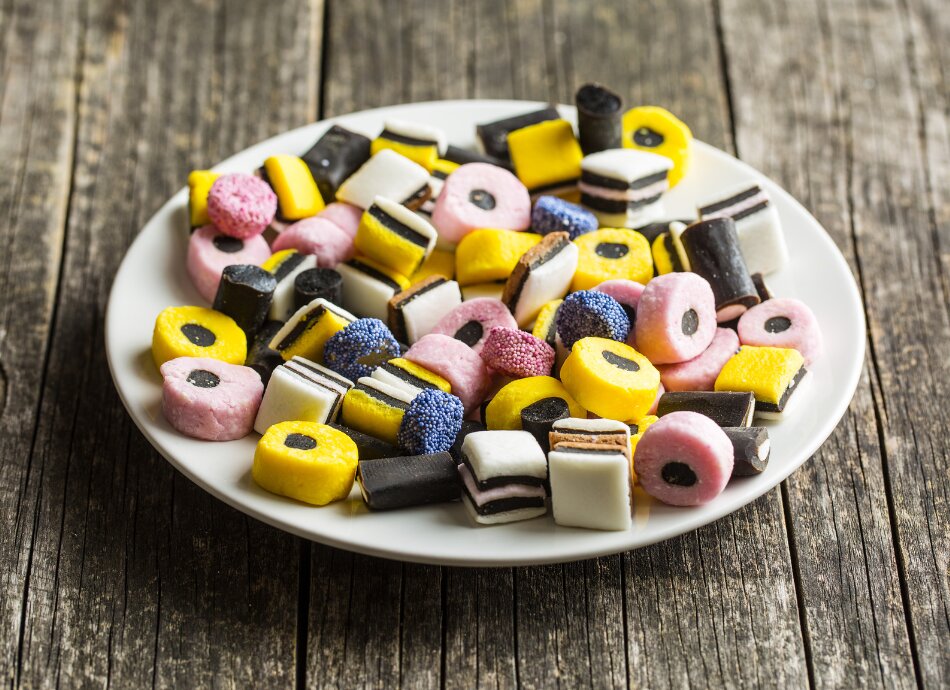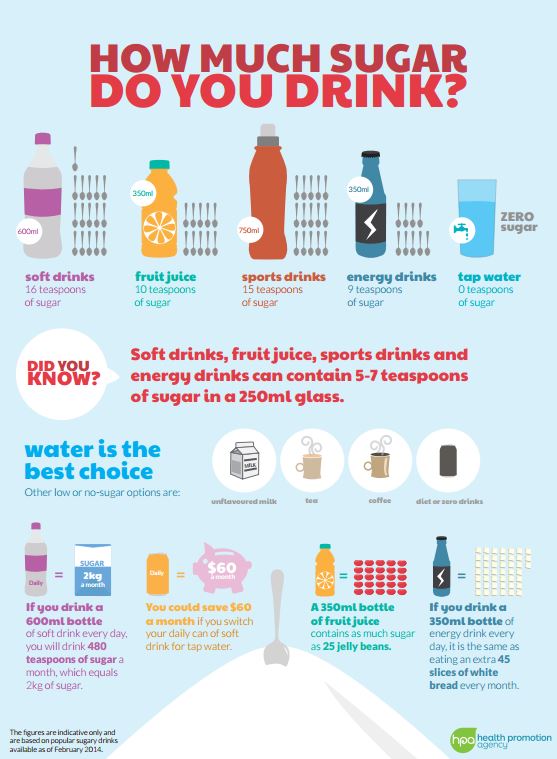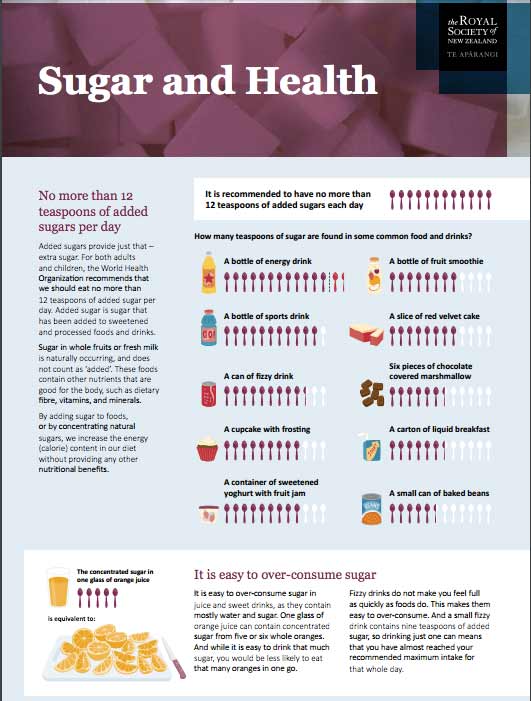Video: Sugar and Health
This video may take a few moments to load.
(Royal Society Te Apārangi, NZ, 2016)

Low or no data? Visit zero.govt.nz, scroll down the page then click on our logo to return to our site and browse for free.

This video may take a few moments to load.
(Royal Society Te Apārangi, NZ, 2016)
Nutrition labels tell you how much sugar a food contains. Food that has 15g or more per 100g is considered high in sugar. Anything under 5g of total sugar per 100g is low.
The World Health Organization recommends having no more than 12 teaspoons of sugar a day. That is around 50g (1 teaspoon = 4g of sugar). On average, this is about half the amount of sugar an adult currently consumes daily, with most of us averaging around 37 teaspoons of sugar in what what we eat and drink.
Children should ideally consume no more than 3–4 teaspoons per day. However the 2002 National Children’s Nutrition Survey found the average daily intake for boys was 67g (17 teaspoons) and for girls was 61g (15 teaspoons).
Foods that contain free sugars are the ones we should be cutting down on. Free sugars include any sugar that’s added to a product by manufacturers, cooks or consumers or the sugar naturally present in syrups, honey and fruit juices. It doesn’t include sugars in dairy products.
This video may take a few moments to load.
(British Heart Foundation NZ, NZ, 2019)
Sugar can be called many different names. Look for these common free sugars on ingredients labels:
You can use this sugar calculator(external link) for a quick check on how much sugar is in some of the everyday food and drink your child might have. You'll be surprised how quickly it can add up!
This video may take a few moments to load.
(BBC, UK, 2017)
Here are some simple tips to help you gradually cut down on the amount of added sugar in your diet.
Nearly a quarter of the added sugar in our diets comes from sugary drinks such as fizzy drinks, juices and cordials. For example, a 600ml bottle of fizzy drink contains around 16 teaspoons of sugar. So one 600ml bottle of fizzy contains the total daily sugar allowance for an adult plus a quarter more. Fruit drinks may seem healthy but are very high in added sugar. Check out this poster(external link) showing you how much sugar is in different drinks. A 500ml bottle of cola contains the equivalent of 17 cubes of sugar.
Consuming sugary drinks increases the risk of obesity, diabetes and tooth decay in children and adults. Children who drink one or more sugary drinks per day are 50–60% more likely to be overweight or obese than kids who don't.
Here are some ways you can cut back on sugary drinks:
Many breakfast cereals are high in sugar. Read the nutrition label and choose only products that have less than 15g or less of sugar per 100g.
Remember, high sugar = 15g or more per 100g food, low sugar = 5g or less per 100g food. Write it down and pop it in your wallet to retrieve when you're grocery shopping, or bookmark this page on your cell phone.
Rethink your approach to snacks. Do you have to have chocolate, biscuits and cake every day? Why not try reaching for a healthier option first?
For healthy meal ideas for different diets check out our healthy recipes library including healthy recipes for tamariki.
The truth about sugar(external link) Heart Foundation NZ
How to understand food labels(external link) Eat For Health, Australian Government
How much sugar do you drink?(external link) Health Promotion Agency, NZ, 2014 English(external link), te reo Māori(external link)
Sugar and health(external link) Royal Society of NZ, 2016 English(external link), te reo Māori(external link), Samoan(external link)

Health Promotion Agency, NZ, 2014
English, te reo Māori

Royal Society of NZ, 2016
English, te reo Māori, Samoan, Tongan
Credits: Healthify editorial team. Healthify is brought to you by Health Navigator Charitable Trust.
Page last updated: